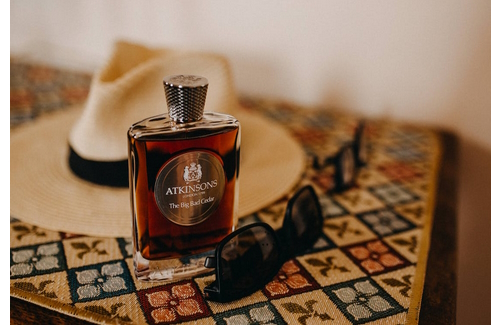
When it comes to bestowing gratitude upon the cherished individuals in your wedding party, bridesman gifts emerge as a remarkable avenue. From traditional offerings like cufflinks and ties to more distinctive presents, the choices are abundant. With a dash of contemplation and a splash of creativity, you can discover the ideal bridesman gift that eloquently conveys your heartfelt appreciation. Whether it takes the form of an engraved flask or a custom-made keychain, rest assured that your bridesmen will feel deeply honoured and cherished upon receiving these thoughtful tokens.
Exploring the Realm of Bridesman Gifts
Weddings often revolve around the spotlight cast upon the bride and groom. However, let us not overlook the invaluable contributions made by the bridesmaids and groomsmen, deserving recognition for their instrumental roles in ensuring the success of your special day. It is within this context that bridesman gifts enter the stage. But what exactly do these gifts entail? Allow us to delve deeper into this concept.
Bridesman gifts embody tokens of appreciation presented by the bride or groom to their bridal party, acknowledging their invaluable support in handling wedding-related tasks such as event planning, organization, shower hosting, or providing an extra pair of hands on the grand day itself. These gifts can span the spectrum from modest mementoes like cufflinks or pocket watches to more elegant gestures such as personalized jewellery boxes or weekend bags. The crux lies in selecting an item that aptly reflects the depth of your gratitude for their inclusion in your wedding entourage.
When the time comes to select bridesman gifts, it is crucial to consider the preferences and interests of the recipients. Ponder upon their tastes, hobbies, and style inclinations, ensuring that their gifts are tailored to make them feel exceptionally special upon unwrapping their presents. Among the popular ideas that have garnered acclaim are engraved flasks or pocket knives for gentlemen, personalized jewellery pieces like necklaces and bracelets, and customized robes or monogrammed accessories.
Navigating the Selection Process
The selection of bridesman gifts constitutes a significant aspect of any wedding planning endeavour. Bridesmaids often encompass close family members or friends of the bride, and their presence is pivotal in ensuring a seamless and triumphant celebration. Thus, it is imperative to choose gifts that genuinely express your appreciation for their indispensable role in making your special day flawless. Here are a few considerations to bear in mind when embarking on the quest for the perfect bridesman gifts:
Budgetary Constraints: Before embarking on the shopping spree for bridesman gifts, take a moment to reflect upon your allocated budget for each present. Depending on your financial parameters, you may opt for personalized items like engraved jewellery or monogrammed robes, bypassing pricier alternatives such as watches or designer handbags.
Personalisation as a Touch of Thoughtfulness: The addition of a personalized touch injects a profound sense of thoughtfulness into the gift-giving process, manifesting your appreciation for each unique bridesman's presence on your momentous day. From customized robes and jewellery boxes adorned with engravings to monogrammed tumblers and coffee mugs, a plethora of avenues exist to render each gift as distinct as the individual receiving it.
Embrace Utility: One failsafe approach to ensure that your gift will be cherished and utilized is to select items that boast practicality. By opting for something that serves a useful purpose, you guarantee that your bridesmen will integrate their gifts seamlessly into their everyday lives. Consider functional items that can be treasured and put to good use, serving as constant reminders of the memorable role they played in your wedding.
The Plethora of Gift Ideas for Bridesmen
Narrowing down the choices for bridesman gifts can prove to be a perplexing challenge as the big day draws near. Striking the delicate balance between appreciation and personal preferences can be achieved with a touch of inspiration. Here are some popular gift ideas that are bound to delight the important men in your life:
Fashionably Refined: For the fashion-forward man, personalized cufflinks or tie clips make exquisite choices. These stylish accessories elevate any ensemble, adding a sophisticated and debonair flair. Explore the myriad of options available online, boasting diverse shapes and designs that can be customized with initials or special messages, accentuating their allure.
Practicality Meets Preparedness: For practical and resourceful individuals, consider a multi-tool keychain or pocket knife set. These versatile tools serve as ideal companions for the handyman, ensuring that they are equipped for any eventuality. To enhance the personal touch, opt for personalization options that distinguish the gift as a token exclusively from you.
Technological Marvels: For tech-savvy enthusiasts, surprise them with a wireless charging station. This gift transcends utility, combining seamless functionality with visual aesthetics. With an array of options available, complete with additional ports and features, they can effortlessly charge multiple devices simultaneously—a convenient addition for business trips or leisurely vacations.
Conclusion
In conclusion, bridesman gifts serve as splendid vessels through which you can express your profound appreciation to your bridal party, acknowledging their indispensable role in making your special day truly exceptional. The perfect gift transcends the confines of a one-size-fits-all approach, instead prioritizing the individual interests, personality, and style of each groomsman. From personalized cufflinks to whiskey glasses, the world of bridesman gifts abounds with choices that will undoubtedly leave an indelible mark on your groomsmen, ensuring that your wedding day resonates with gratitude and camaraderie.





